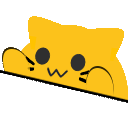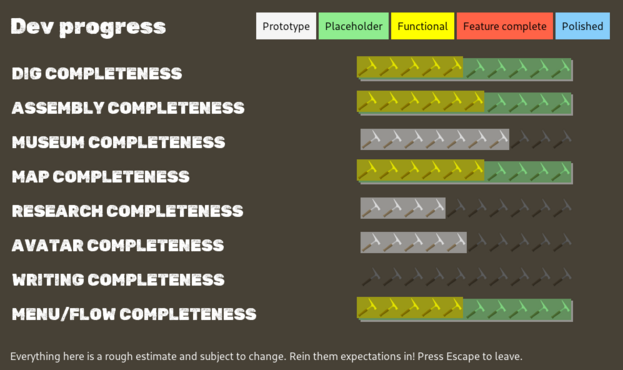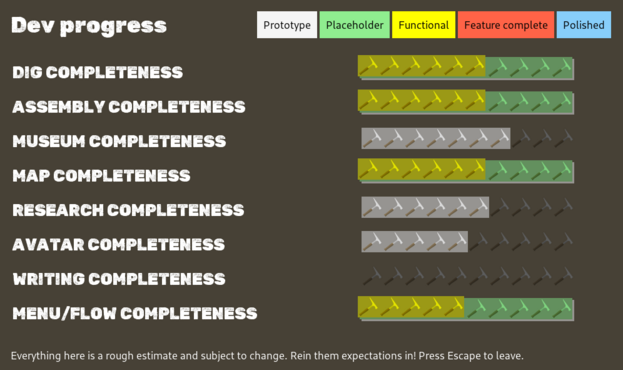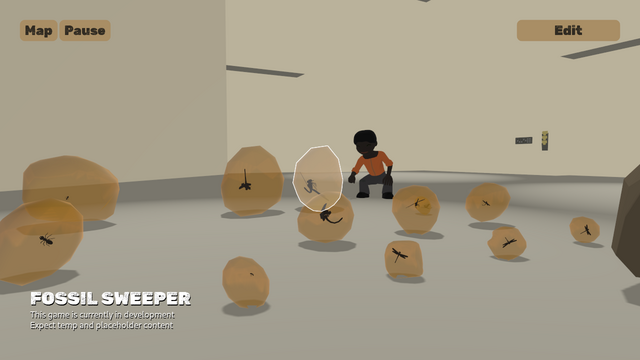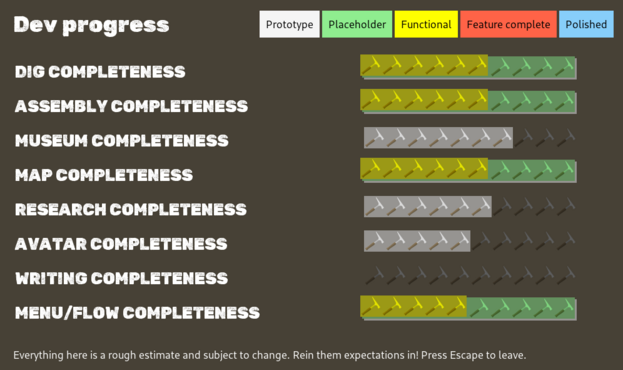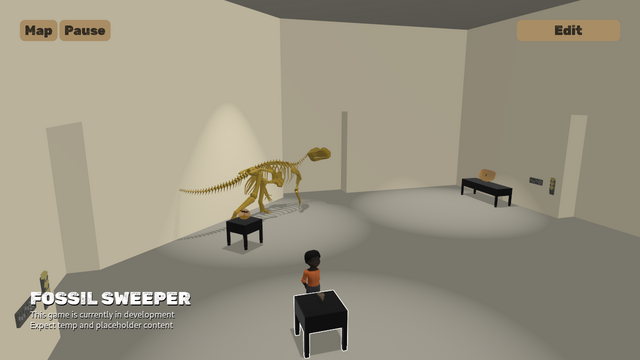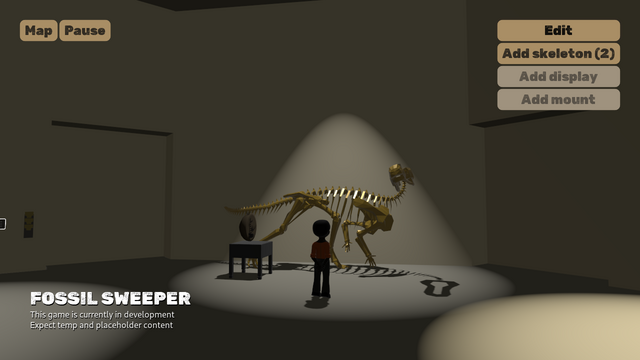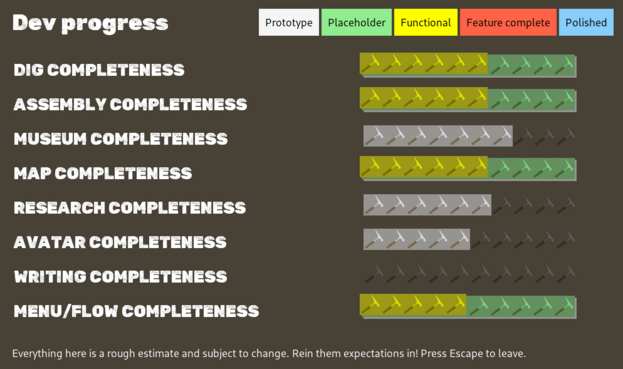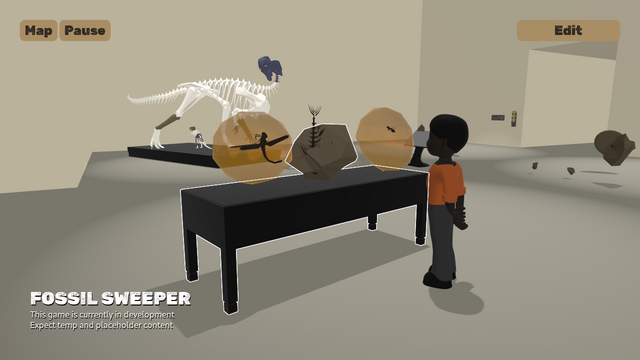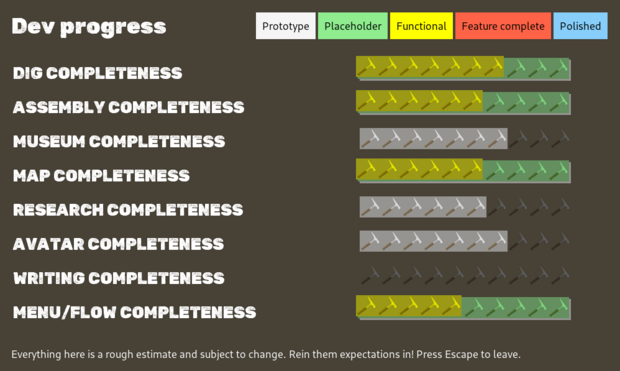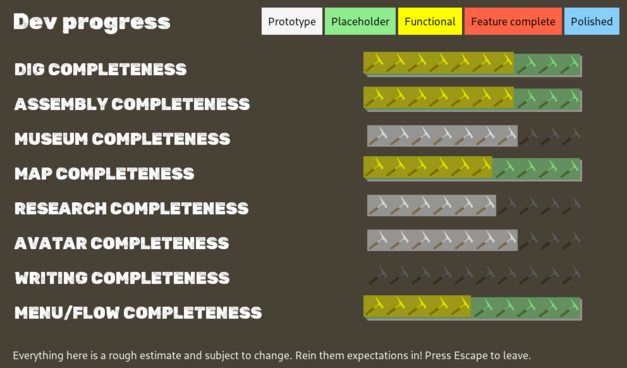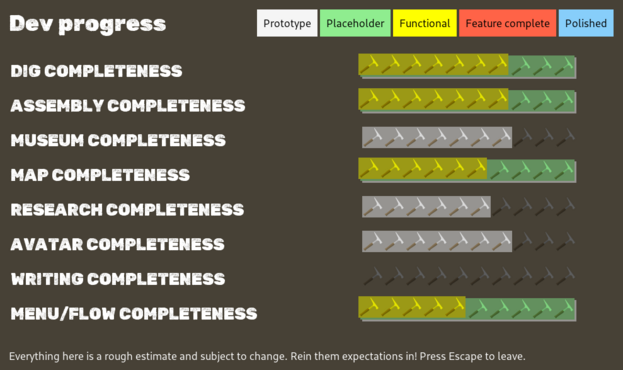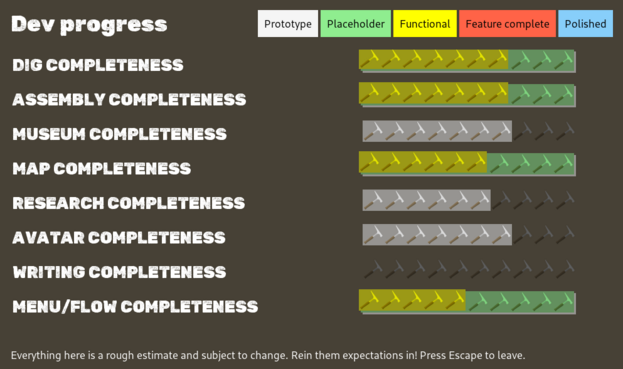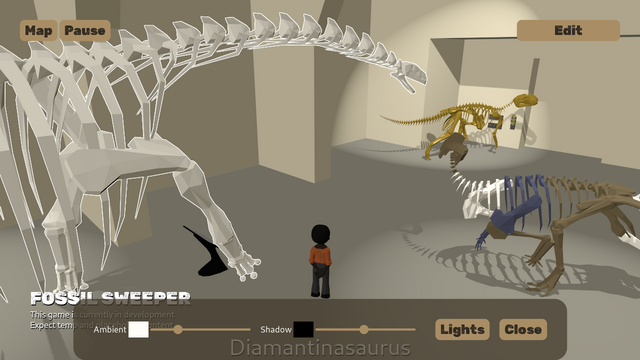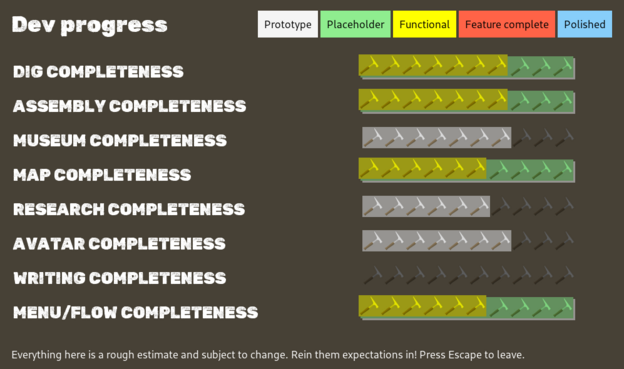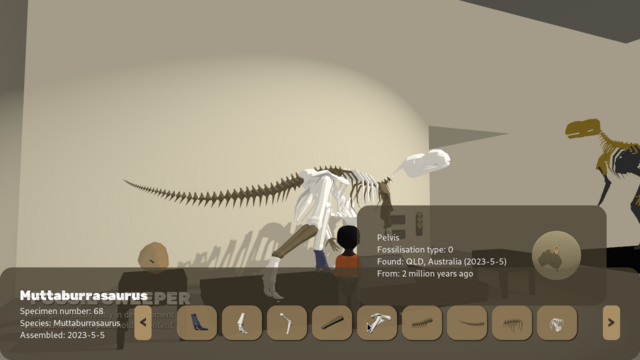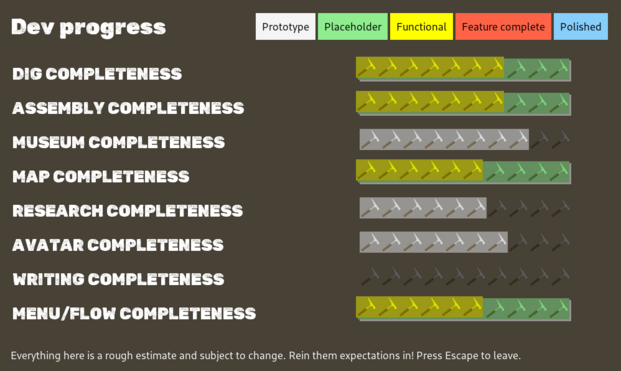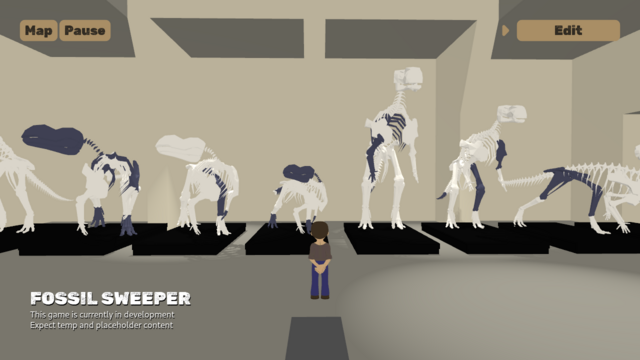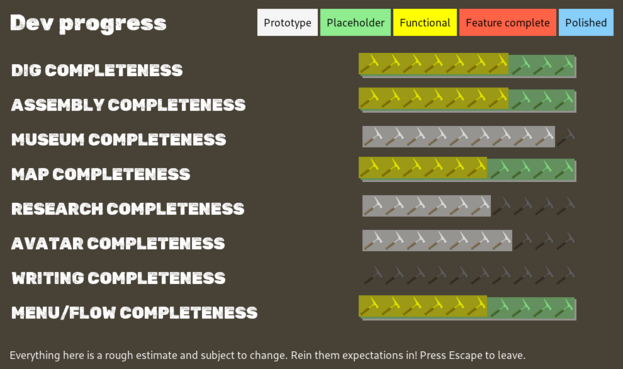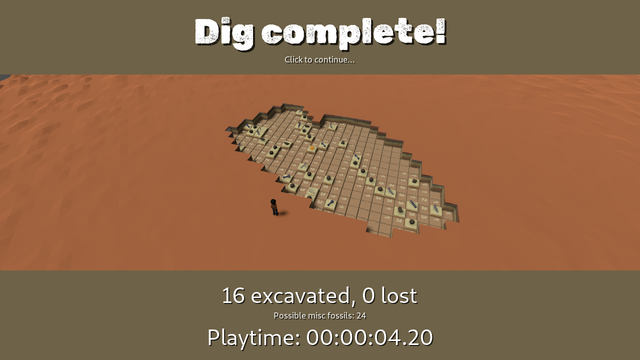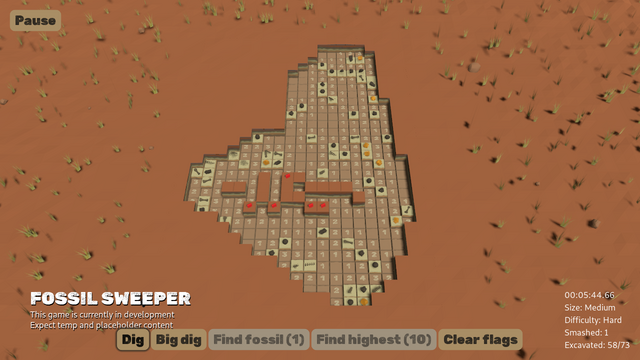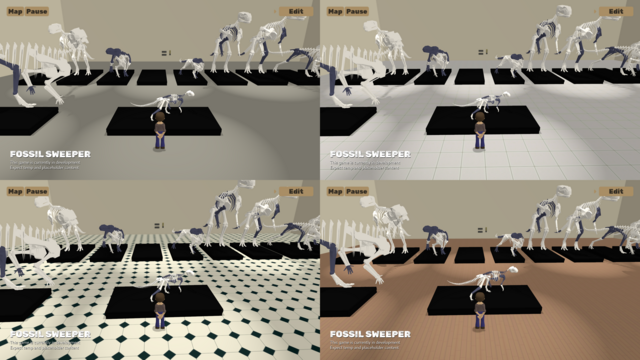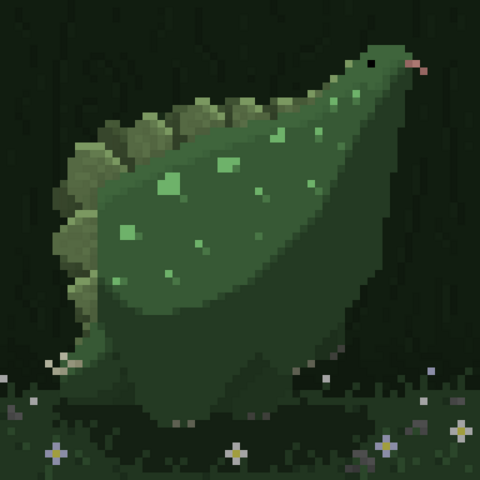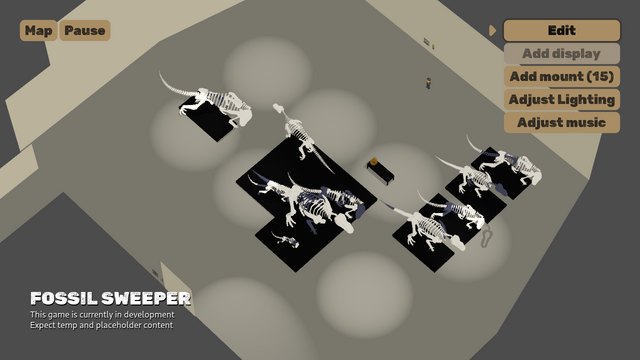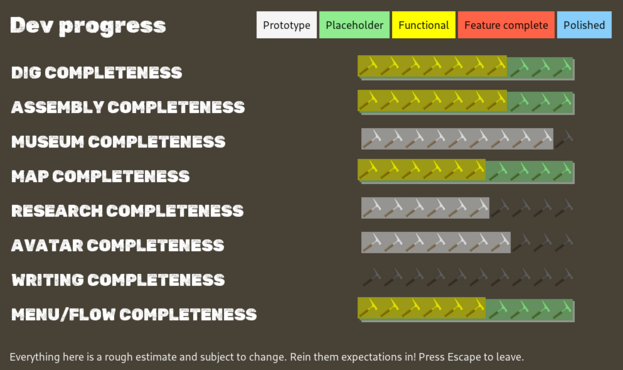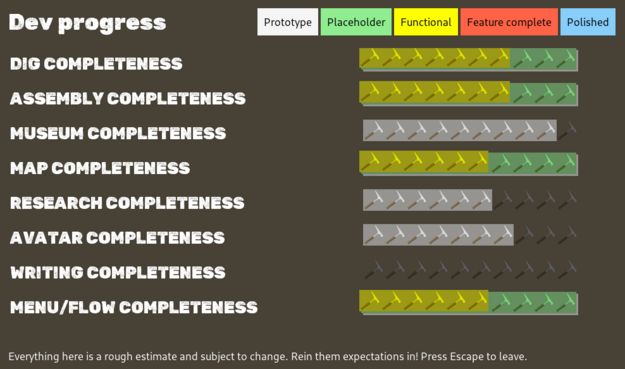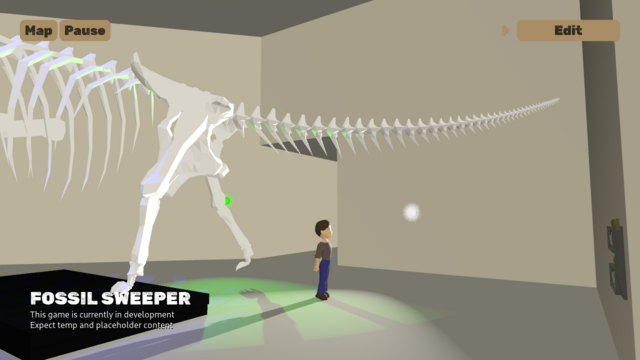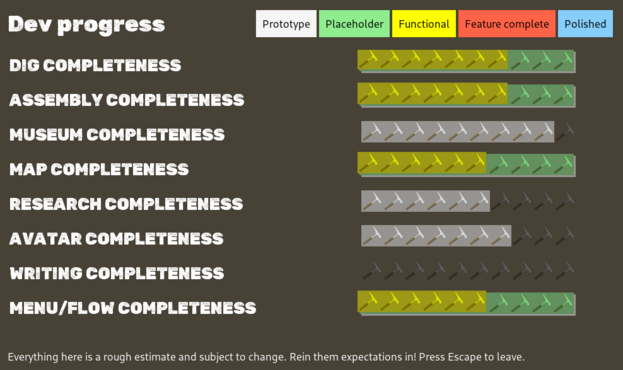#gamedev #indiedev
https://www.youtube.com/watch?v=Wwu7GPdw8tI
Fossil Sweeper Progress Update X
#gamedev #indiedev
https://www.youtube.com/watch?v=C3AKwIrxt5E
Fossil Sweeper Progress Update XI
Fossil Sweeper Progress Update XII
https://www.patreon.com/posts/84750897
https://www.youtube.com/watch?v=dYF-yVBGck4
Fossil Sweeper Progress Update XIII
https://www.patreon.com/posts/86482874
Fossil Sweeper Progress Update XIV
https://www.patreon.com/posts/87884067
Fossil Sweeper Progress Update XV
As part of assessing how the current museum music implementation is likely to scale/map against a growing museum with a diversity of themed rooms, I put together a little example museum with a dozen or so rooms full of placeholder models and varied the lighting a little.
I think walking around the extended space does a better job of communicating where this is headed, but still feels empty without customiseable light placement and wall displays. This'll do for now though!
#indiedev #devlog #GodotEngine https://www.youtube.com/watch?v=m_Pch1djf20
Fossil Sweeper Progress Update XVI
https://www.patreon.com/posts/91445864
Fossil Sweeper Progress Update XVII
Fossil Sweeper Progress Update XVIII
#gamedev #godotengine #indiedev
Fossil Sweeper Progress Update XIX
The January progress update video is running a little late (January's been busy in general, and this video is a bit bigger than usual). I've still been doing bits and pieces though.
Today I finished implementing size variation for skeletons across the assembly phase/museum. Not sure to what extent I'm going to try to express ontogeny, but regardless, it's cool to have every skeleton be unique now \o/
Still unsure on expressing ontogeny in this, but if I do, smaller will have younger features
Fossil Sweeper Progress Update XX
Expanding the perimeter by one tile in cardinal directions helps get rid of the single-tile "protrusions" seen on the far left side of the previous screenshot (those tend to be awkward/more likely to require a guess, which is less-interesting gameplay).
Still need to think about what all this means for coordinates when playing with TTS (don't think I'll do anything special, but there's a big amount of "wasted" coordinate space in the top left and bottom left).
Because these are generated, I get a bunch of variation for free. I don't think that variation feels like "content," but it helps make digs feel less samey, which is a big deal for the sort of game this is.
I've still got a bunch of other stuff to wrap up before I can start focusing in earnest on content and variation density, but it's exciting to on the cusp of.
I mocked up some museum floor textures for the last video, and variation there from such a minimal change is more than I expected.
I spent some of today's stream poking around with hotloading meshes and attaching them to existing skeletons (for character customisation).
I already do this in places with skeleton fossil chunks, and I'd done some previous experiments, but it seems I'd overlooked that vertex group information seems to get broken/stomped on if meshes are exported separately - and not consistently (if they're *imported* as separate files, that's fine). A little frustrating, but I think I have something workable.
Edit: Forgot the URL -_-
https://www.patreon.com/posts/99212430
https://www.youtube.com/watch?v=mJwTAGkNX8A
#indiedev #devlog #GodotEngine
Fossil Sweeper Progress Update XXI
https://www.patreon.com/posts/100631563
https://www.youtube.com/watch?v=gYzmPomh9CM
#indiedev #devlog #GodotEngine
Fossil Sweeper Progress Update XXII
https://www.patreon.com/posts/103006066
@Cheeseness That,
is a lil tongue 